The most beautiful places in Britain during autumn
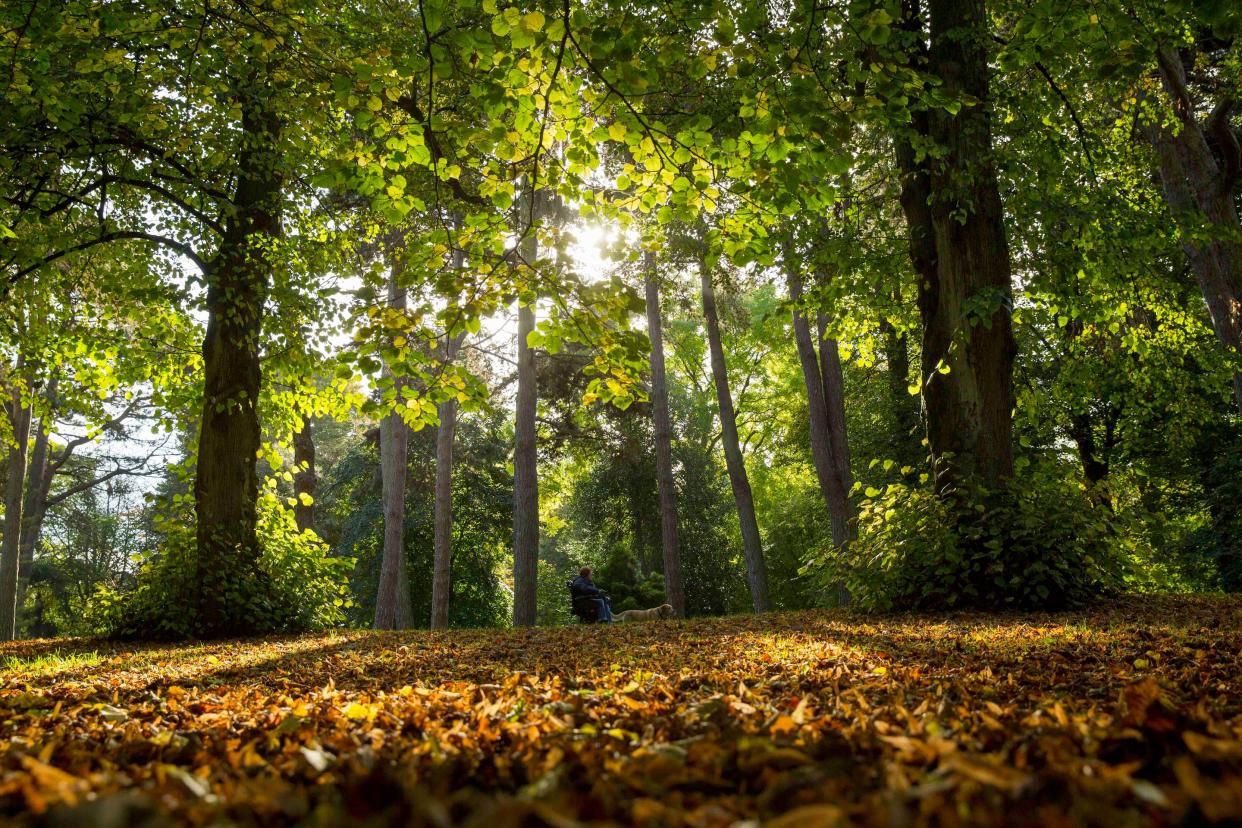
These days the seasons rarely seem to do what they should. Summer is more often than not a washout. So too winter, with fields more likely to be covered in pools of flood water than drifts of virgin snow.
Autumn, though, remains the stuff of childhood memories. Scuffing leaves with your shoes; the sharp tang in the air; the delicious thrill of lying in bed on the first properly cold morning of the year while all outside lies under hard frost. Raincoats drying on radiators and the first day of school.
Albert -Camus, the French philosopher, deemed autumn comparable to a “second spring”, one “where every leaf is a flower”. The difference is that while spring is the season of -renewal, autumn’s beauty lies in -decay, a -thousand little deaths lending -visceral colour to even the dreariest of suburban parks.
All of its joys are linked to this sense of an ending: the flocks of swallows gathering jittery on telephone wires ready to embark on their mammoth six-week odyssey to Africa; the bright days that fade out like stage lights; the shrubs and trees producing their final harvest before shedding their leaves to the earth.
Regardless of age, it is impossible at this time of year to fight that sense of life rushing by. These are the months when our senses sharpen. When we grow most attuned to the seasons and connect with the landscape. So where best to experience that ephemeral beauty?
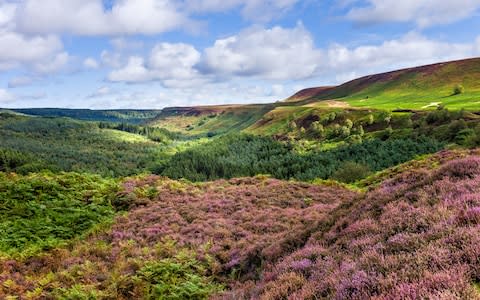
Firstly, you will find it in abundance across northern Britain, where swathes of heather moorland are at present in ebullient flower. The North York Moors, for example, the largest continuous expanse of such moorland in England and Wales, currently resembles a thick carpet of purple stretching some 108,000 acres over to the east coast.
Calderdale’s Midgley Moor, where the poet Ted Hughes once roamed, is another place to explore the purple haze. Away from the wild uplands, our woods and forests are turning a glorious coppery gold.
The old oak and beech enclosures of the New Forest in Hampshire render it a sight to behold in the autumn months. You can crunch through drifts of fallen leaves breathing in the rich and heady scents of the mouldering floor.
Similarly, one could spend hours among the kaleidoscopic array of -colours in Bute Park in the centre of Cardiff, which contains more than 3,000 individually categorised tree species – each its own different riot of colour. Any other city park will similarly be putting on its own individual display of all the joys of autumn.
Yet even less than lovely urban landscapes are transformed. Scrubby road verges and alleyways suddenly spill over with blackberries waiting to be harvested.
Get out to enjoy them, for those plump fruits, like the turning leaves, will not be there long.
“What pensive beauty autumn shows,” wrote William Wordsworth, “before she hears the sound of winter rushing in.”
Beautiful spots to bask in autumn
1. Pegwell Bay, Kent (Claire Thompson)
I would recommend the experience of watching migratory birds on the salt marsh and mudflats at Pegwell Bay as the sun starts to shine on the bay into that typical glowing golden autumn lowlight.

It gives you a sense of the loss of summer, the swifts and swallows gone, darker evenings and colder and damper days. But a blustery afternoon walk at Pegwell Bay turns things around.
Nostalgia for summer is replaced by the pleasure of experiencing mature beauty, change, the unexpected, and excitement as one observes curlew, whimbrel, redshank, sanderlings and turnstones. Listen for the haunting sound of curlew and redshank calling to each other in their small groups as they feed. And watch for the sight of a peregrine falcon and a marsh harrier.
The Art of Mindful Birdwatching by Claire Thompson is published by Quarto, £8.99
2. Glen Coe, Scotland (Mary-Ann Ochota)
Arguably Scotland’s most famous glen, Glen Coe is gilded with extra-special luminous beauty in the shoulder season. There are fewer midges, fewer tourists, and if you’re lucky, the most glorious golden light that’s ever shone on your face.

Some people bemoan our temperate climate, but I love it. In autumn the sun doesn’t rise as high in the sky, which gives us prolonged mornings and evenings. Light bathes the hills, fiery beech leaves and bracken aglow, the purple heather and long shadows painting depth into the rough landscape. It can feel mysterious and melancholic, but in a dreamy, time-slowing, write-a-poem kind of way. In a way that makes you want to hike in silence and wonder about the people who came before and made this fierce country home. Look out for red deer and golden eagles as you walk to Coire Gabhail, the Hidden Valley, a short but committing walk suitable for the well-prepared. Autumn can bite the unready. This isn’t the season for ice cream – it’s time to relish west coast whiskies, fresh seafood from Loch Leven and game cooked to perfection. Breathe deeply, walk boldly and feed well. Winter is coming, but only after the golden glow fades.
Mary-Ann Ochota is a British Mountaineering Council Hillwalking ambassador and author of Hidden Histories: A Spotter’s Guide to the British Landscape.
3. Hatterrall Ridge, Wales (John Lewis-Stempel)
Forget the poets. Autumn is truly experienced on Hatterrall Ridge, in the Black Mountains on the Powys/Monmouthshire border, with a coal-slack sky of Wales to your back, the plunging peregrines beneath your feet. Wait for the squalling rain to come on (which it does, sooner rather than later). Then watch it devour the view – 40 miles of it – of all the pretty little summer fields of green England. Do this for days upon days in waterproofs.
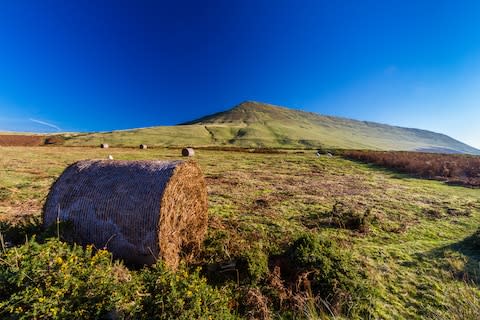
Grey is the colour of autumn. Rain is its element. If you were lucky you might be up there at Hatterrall at night with a gap in the cloud – there is probably no darker place in England to stargaze – and hear the redwings. The migrant thrushes follow the ridge south, before fanning east. But the “tseep” calls of the redwing are only more nails in summer’s coffin.
John Lewis-Stempel is a farmer, and the author of Where Poppies Blow, the winner of the 2017 Wainwright Prize for Nature Writing
4. Burnham Beeches, Buckinghamshire (Peter Fiennes)
Burnham Beeches is close to London and an internationally important beech woodland for fungi (many rare and threatened). It’s not a huge place, but great for families – it was used as a location for the Harry Potter films. In the autumn you’ll see a lot of ancient beeches in full glorious golden display. Some are hundreds of years old and have been pollarded, which has helped them live longer. There’s no better tree in autumn than the beech, although there are some beautiful oak trees here, too.

I visit in the morning when the light is low through the trees. They have very shallow roots which snake all over the ground, and you can trip over them easily, but that also means that lovely limpid pools gather among the roots when it has been raining. Many rare invertebrates rely on fungi for food, and to lay their eggs. So as well as looking up at the leaves, you need to be on your hands and knees scanning the forest floor for toadstools. I try to go every year, but sometimes I’m too late.
Oak and Ash and Thorn: The Ancient Woods and New Forests of Britain by Peter Fiennes is published by Oneworld, £16.99
5. Somerset Levels (Simon King)
At this time of year I would head to the Somerset Levels and Moors, particularly the Avalon Marshes Project which includes Shapwick Heath, Ham Wall and Westhay Heath. The reasons are manifold. If ever you wanted to see a land of mists, that’s the place. You’ve got the wetlands and late evening and early morning the mist sits 3ft off the ground with trees and the occasional reed head sticking above it. It’s like you’re walking in a cloud, which is very beautiful.
This period in the year is when there is a transition of wildlife. In early autumn the last of the summer migrants are hanging on and the first of the winter migrants are arriving, in terms of bird species. Wading birds come and go.
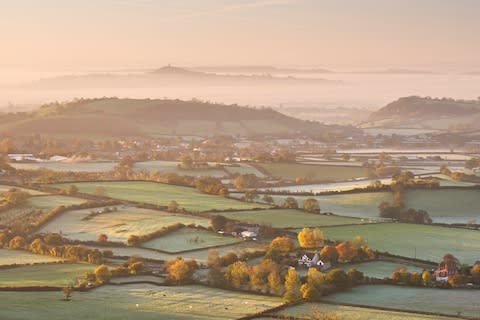
Perhaps the most significant wildlife event is the starling murmuration, which occurs through the winter. In early autumn the birds are building up to in excess of a million when it’s in full flow. It is undoubtedly one of the wildlife wonders of the world. If you’re fortunate and pick the right spot you can be underneath a sky literally filled with birds as they come in the evening to roost in the reed beds for safety. Along with them come the creatures that feed upon them; the peregrine falcons and sparrowhawks and other raptors. The scale of the amorphous blobs in the sky that dance, twirl and twist is very special.
Simon King hosts Wild Days Out in Somerset and at Knepp, simonkingwildlife.com
6. Dartmoor (Nick Baker)
I live on Dartmoor, so I’m spoilt straight away for options. Dartmoor from the air looks like a big wheel, with the spokes made up of the rivers that radiate from the top of the granite core, and each one of those rivers is lined with woodland at some point along its length. These are often old working woodlands, or even ancient woodlands, and some of my favourites are the hanging oak woodlands you get in the Teign Valley.
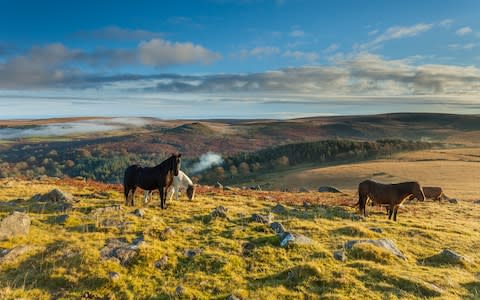
You get a nice calm mizzle, which is what we call mist and drizzle here, and when it’s still you can listen to the leaves begin to fall. There’s something really nice about immersing yourself in that lovely, warm, moist cocoon of decay that woodlands become, and I always marvel at the tonnage of leaves that falls from the canopy. As it hits the ground you get these lovely great big mats of leaves, and by the following year all those leaves have been grabbed by invertebrates and dragged into the soil. For me it’s a time to watch the beginnings of that process and marvel.
ReWild: The Art of Returning to Nature by Nick Baker is published by Aurum Press, £16.99
7. Rydal, Cumbria (Fiona Stafford)
The path between Rydal and Grasmere is mixed woodland and in autumn the colours are amazing. The lie of the land means you get lovely glimpses of lakes through the trees.
There are mature oak trees and in Rydal Park there are all sorts of beautiful chestnut trees.
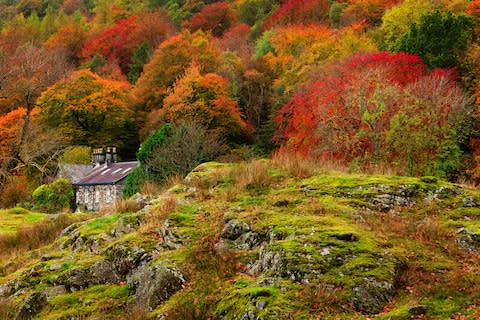
It’s a walk that William Wordsworth would have done when he and Dorothy arrived in the Lake District in the winter of 1799 and moved into Dove Cottage, and in later life when he moved to Rydal Mount. It’s a path that inspired him to write poems like The Oak and the Broom, so it’s a resonant literary walk as well as a very beautiful one.
The Long, Long Life of Trees by Fiona Stafford is published by Yale University Press, £10.99
Autumn wildlife and where to see it
Migratory birds
Blakeney Point, Norfolk
Blakeney Freshes is a popular spot for bird watching. In autumn, large swirling flocks of golden plover move between the harbour and the marshes, while the fields and salt marsh provide grazing for wigeon and dark Brent geese from Siberia.
Strangford Lough, Northern Ireland
The arrival of Brent geese is one of Strangford Lough’s iconic autumn sights. The lough now hosts more than 75 per cent of the Canadian light-bellied Brent goose population in late autumn, and is by far the most important site for this species outside the breeding season.

Wicken Fen, Cambridgeshire
Wicken Fen is teeming with wildlife, including a large variety of bird species (like the little egret, below). Take a walk around the reserve during the autumn months to see swallows and martins gathering before their migration south, plus newly arrived winter migrants such as wigeon, redwing and fieldfares. Hen harriers will also be returning from their summer breeding grounds.
Seals and pups
Autumn is the season for seal pups to be born around the coast of the UK.
Farne Islands, Northumberland
The Farnes are home to one of the biggest grey seal colonies in the British Isles. They’ve been here for at least 800 years, but were hunted for oil and skins for most of that time. Now they’re protected, and you can try to spot them during the pupping season.

St David’s Peninsula, Pembrokeshire
The peninsula largely comprises Wales’ oldest rocks – laid down some 600 million years ago during the Precambrian era. It also boasts Seal Bay, which lives up to its name in autumn when pups are being born on the shore.
Red squirrels
Autumn is the best time to see red squirrels. There are fewer leaves on the trees, which makes these endearing creatures easier to spot as they gather food ahead of the winter.

Borthwood Copse, Isle of Wight
For squirrel-spotting on the Isle of Wight, head to Borthwood Copse, where the population is thriving in carefully managed woodland. The hazel here is coppiced on rotation so that there is always a good crop of nuts for the reds to eat – and the island has no grey squirrels.
For more information and further suggestions for wildlife walks, go to nationaltrust.org.uk/lists/wildlife-walks-this-autumn
Interviews/research: Boudicca Fox-Leonard, Tom Ough and Andrew Baker